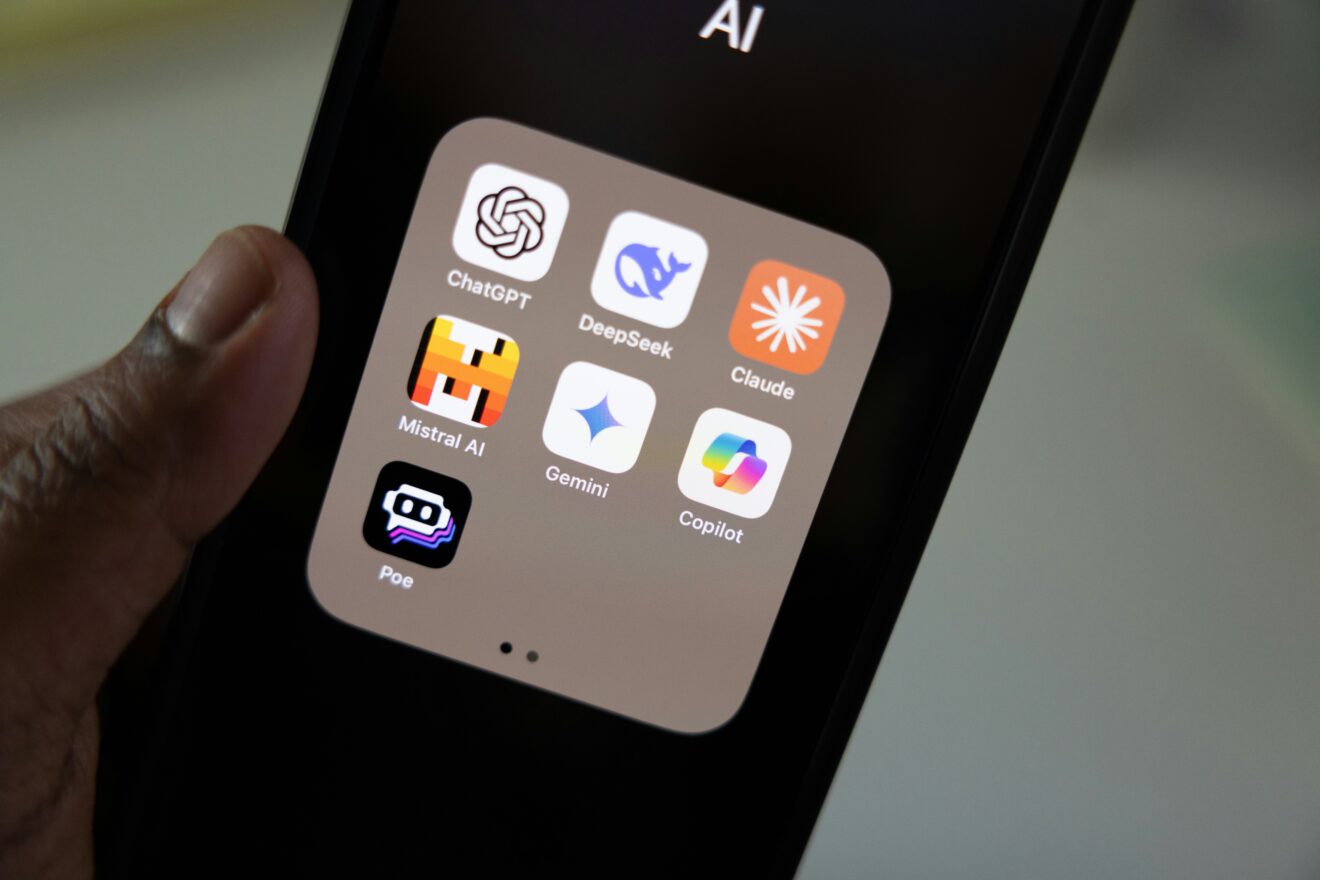With advancements in technology, especially AI, across various sectors, we are witnessing a rapid pace in product and service development. This progress brings significant benefits to end users, offering a wide range of solutions that better meet their needs. However, this rapid development has also introduced several challenges, such as reduced user involvement in the product development, which traditionally emphasizes a user-centered design approach. The race to shorten time-to-market has intensified competition among providers, which has negatively impacted the usability and user experience of AI-based products. It is also highlighted for example by Nielson (2023) that AI products violate decades-old UX findings and research.
The pursuit of gaining a market lead and establishing brand recognition ahead of competitors is another reason why usability and user experience often suffer in the early stages of emerging advanced technology. This trend usually persists until products and services become increasingly complex and the market reaches saturation. At this point, the usability begins to attract more attention from both users and developers. Over time, developers shift their focus from basic usability to creating a deeper user experience that emotionally engages users, fostering long-term customer retention. This trend was evident in the early 2000s when WAP and Java applications became available on handheld devices (Dirin & Nieminen 2018).
While usability and user experience are critical in consumer electronics and applications, the primary concern here extends beyond that realm. Ignoring usability and user experience can have more serious consequences when it comes to devices and services related to health and safety, particularly in hospital settings. Poor usability in such cases can result in life-threatening outcomes as seen with the Therac-25 cancer radiation therapy machine, which caused six deaths due to usability failures. (Ethics Unwrapped n.d). Similar issues have been documented in hospital care, where poorly designed medical devices contributed to patient harm (James 2013; Kavanagh, Saman, Bartel & Westerman 2017).
It is important to recognize that for service designers and developers, AI is just an enabler that makes services faster, smarter, and more efficient. However, human needs, perceptions, priorities, and, most importantly, emotions remain constant despite technological advancements. Therefore, a successful product design must take these factors into account, creating solutions that not only meet user needs and expectations but are also efficient, effective, and emotionally engaging. Achieving this requires addressing usability and user experience principles from the very beginning of the product design phase throughout the entire productization process. User-centered design, and its subsets, have consistently proven to be effective in creating user-friendly products that are both engaging and functional, thereby enhancing user retention and preventing harm.
How to effectively involve users throughout the entire design
The user experience design (UED) process has become well known at Metropolia UAS, especially in the fields of well-being, health technology, and service development. Over the past decade, we have co-developed various forms of user experience design (UED) in the field of agetech to create user-friendly co-design processes with the help of potential users and SME partner companies. (Harra, Kaipainen & Lintula 2023). Through this collaboration, we have developed competencies and guidelines that facilitate the co-creation of solutions applicable across various disciplines including healthcare, particularly in AI-based solution design and development.
The following is the summary of the process that ensures user friendly design. We have collected examples of subgroups within all three phases of user-experience design process. The development process is structured into three distinct phases (see Figure 1).
Phase 1 focuses on a feasibility study, data gathering, and prototyping. This phase involves collecting user needs, expectations, functional capacities, and preferences. Additionally, it emphasizes value co-creation, which plays a crucial role in the co-design of digital products and services. This approach integrates both the user’s perspective and the interactive value derived from the relationship between users, digital systems, and service design processes.
Phase 2 entails usability evaluation and iterative co-development through user trials conducted in laboratories and living labs. Usability testing ensures that the product facilitates easy and efficient interaction, assessing how users engage with interface elements such as buttons and gestures. Furthermore, it guarantees accessibility for individuals with diverse needs, including those with visual or physical impairments. Complementing this, user-experience trials evaluate the product’s familiarity and suitability across real user-environments, its flexibility in use, the emotions it evokes, and the broader purposes, meanings, and outcomes associated with its usage.
Phase 3 focuses on commercialization by gathering and analysing customer and contextual insights. This includes examining cultural characteristics that influence the desirability and usability of the product, ensuring its alignment with market demands.
The goal of all these three phases is to ensure that the product serves the user in the best possible and resource-wise way. Figure 1 presents the overall framework of the user-experience design process for health care solutions that are recommended for future service development.

The latest developments in AI tools and technologies can assist designers at each phase of the design process which impacts the usability of the products and user experience. For example, in Phase 1, AI supports feasibility studies, data gathering, and prototyping through Natural Language Processing (NLP), which enhances data collection and user needs analysis. In Phase 2, AI optimizes usability testing and refines user experience by analysing interaction patterns and accessibility. In Phase 3, predictive modelling enables AI to forecast market trends and user adoption. Table 1 presents examples of AI technologies that can be applied to support each phase of the design process.
| Phase | AI Tools | AI Support |
| Phase1. Feasibility Study; Data Gathering; Prototyping | Machine Learning (ML); Sentiment Analysis; Automated Data Collection | Extracts insights from surveys, social media, and feedback; Identifies user needs and expectations; Generates design prototypes based on constraints; Predicts user preferences and trends |
| Phase 2. Usability Evaluation and Iterative Co-Development | Computer Vision; Eye-Tracking AI; Speech and Gesture Recognition; AI-driven A/B Testing; Predictive Analytics; AI Chatbots for Feedback | Analyses user interaction with UI elements; Assesses accessibility for diverse needs; Evaluates user emotions and engagement; Optimizes interface elements in real-time; Predicts user behaviour for design improvements |
| Phase 3: Commercialization | Predictive Modelling; Recommendation Algorithms; AI-driven Cultural Analytics; Automated Customer Feedback Analysis; Market Trend Analysis | Identifies potential market segments; Personalizes marketing strategies; Adapts products to cultural and regional differences; Enhances customer support and satisfaction; Continuously refining products based on feedback |
Further study
This article aims to raise awareness of the importance of usability and user experience in service design in today’s rapidly growing AI-driven technological era. The critical fact is that human beings remain the primary users of services and devices. Therefore, usability and user experience must be prioritized in our products when human users are involved, regardless of the development methods or technology used. Simply adding various functions to satisfy user needs is not enough; the solution must adhere to essential principles of user experience, including ease of use, engagement, intuitiveness, error tolerance, meaningful feedback, reliability, and the satisfaction of user needs.
The increasing reliance on AI-driven software solutions and services has often impacted the quality of usability and user experience. In the healthcare sector, this trend can lead to serious, potentially life-threatening consequences. Therefore, it is crucial to emphasize and prioritize user-friendly design from the earliest phases of product design and development through to the final stages of the process.
The user-experience design phases proposed in this article require validation through empirical studies and real-world applications. As part of future research, we first aim to explore the practical implementation of various AI-based technologies, at each phase of the development process, as presented in Table 1. This further study will focus on assessing the effectiveness of these AI tools in enhancing usability, optimizing user experience, and addressing challenges that arise during the design and development stages. By integrating AI-driven solutions, we aim to provide a more comprehensive understanding of how these technologies can improve the overall product development lifecycle, leading to more efficient, user-friendly outcomes. Secondly, we aim to examine how these user-friendly solutions, developed through this approach, impact older adults’ experiences regarding meaningful life.
References
Dirin, A., & Nieminen, M. 2018. The three eras of mobile learning user experience. In Computers Supported Education: 9th International Conference, CSEDU 2017, Porto, Portugal, April 21-23, 2017, Revised Selected Papers 9 (pp. 207-220). Springer International Publishing.
Ethics Unwrapped n.d. Therac-25. Accessed 29 November 2024.
Harra, T., Kaipainen, A., Lintula, L. 2023. Käyttäjäystävällisen ikäteknologian aallonharjalle. Helsinki: Metropolia University of Applied Sciences.
James, J.T. 2013. A new, evidence-based estimate of patient harms associated with hospital care. J Patient Saf. 2013 Sep;9(3):122-128.
Kavanagh, K. T., Saman, D. M., Bartel, R., Westerman, K. 2017. Estimating Hospital-Related Deaths Due to Medical Error: A Perspective from Patient Advocates. J Patient Saf. 2017 Mar;13(1):1-5.
Nielson, J. 2023. Classic Usability Important for AI. Jakob Nielsen on UX September 1 2023. Accessed 25 November 2024.
Authors
-
Amir Dirin
Senior Lecturer, Metropolia UASD.Sc., Docent in educational technology at Helsinki University. Ajou Univeristy globle fellow scientist.
About the author -

Toini Harra
Principal Lecturer, Metropolia UASPhD, Occupational therapist and coach. Researcher and developer of collaboration and co-creation in national and international projects
About the author

